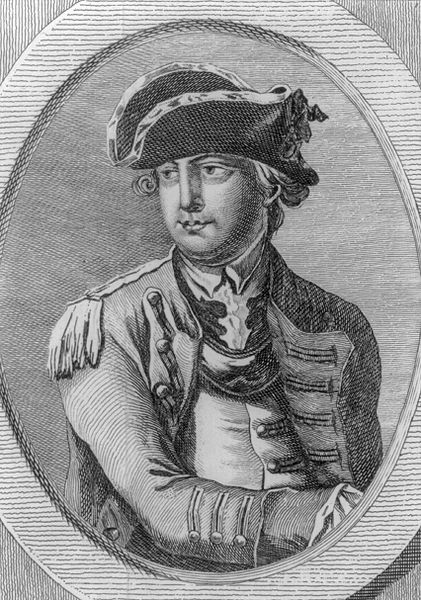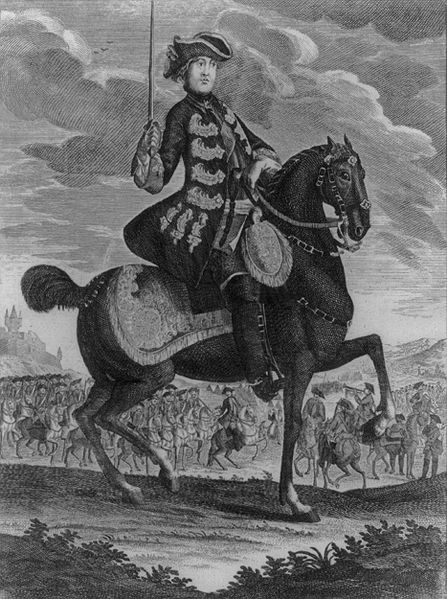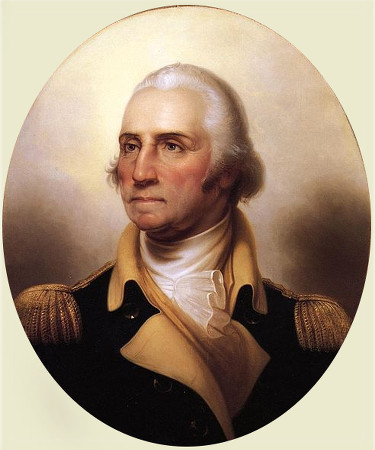General Charles Lee was a leader during the American Revolution. He was second-in-command to General George Washington, and famously believed that he ought to have been given leadership of the army. He criticized Washington’s decisions and openly attacked his reputation. He was eventually dismissed from the army.
Early Military Career

General Charles Lee
public domain image
Charles Lee born February 6, 1732 in Dernhall, Cheshire, England. He was educated at a free grammar school in Bury St. Edmunds and later in Switzerland, where he became proficient in six languages. In 1747, his father, a colonel of the 55th foot Regiment, purchased a commission for his son in his own regiment.
Lee began his duty in Ireland. In 1751, after his father died, he had a falling out with his mother, and from then on, he was only close with his one surviving sister, having lost five siblings. In 1754, he purchased a Lieutenant’s commission for himself, and his entire regiment was sent to North America for the Seven Years’ War under Major General Edward Braddock.
While he was in America, he married the daughter of a Mohawk Indian chief White Thunder. His wife’s name is unknown, but the pair had a set of twins, a boy and a girl. The tribe adopted him, and gave him a name that translates to “Boiling Water.” He was known to be moody and choleric, and, according to himself, suffered from a “distemper of … mind.”
He purchased a Captain’s commission and continued in the war until he was injured in an assault on Fort Ticonderoga. During his recovery on Long Island, a surgeon he’d earlier berated and thrashed made an attempt on his life and nearly succeeded. He recovered, and helped take part in the last few battles in the Conquest of Canada.
His transfered to another regiment, now as a major, and fought in the Portuguese army against the Spanish invasion of Portugal; then he traveled to Poland and served as an aide-de-camp to Polish King Stanislaus II for a short time in the Russo-Turkish War. He had many adventures and several near death experiences, including nearly freezing, fever, and earthquake. Eventually, the Seven Years’ War ended, his regiment was disbanded, and he retired as a Major on half pay.
In May 1772, even though his military career was currently inactive, he was promoted to Lieutenant Colonel. He found himself growing sympathetic with the colonies in their discontentment with England, and in 1773, he moved to North America. He spent ten months meeting different patriots and receiving a warm welcome. He began helping train Maryland troops and bought an estate in Virginia. He believed that Americans would not trust a man “who has no property among them.”
America

General Charles Lee on horseback.
He resigned his Royal commission and volunteered his services to the Congress, expecting leadership of the army, with such a distinguished military career to mark him out. George Washington, however, agreed to serve without pay, not to mention, he was a better political choice, having been born and bred in Virginia. Congress felt having a southern leader would balance out the ideals of power, since most of the troops would be from New England.
Only a general, Charles Lee was insulted he was passed over for Commander-in-Chief, and from then on he held Washington in deep scorn. Officially General Artemas Ward held the post of Washington’s second-in-command. However, Ward was aged and had little political ambition outside of the Siege of Boston, so Charles Lee was considered to hold this post.
For a while, he was very outwardly supportive, helped recruit troops, built defenses, trained his troops. He served on the siege lines of Boston, and defended Rhode Island. He was assigned the southern campaign protecting South Carolina against Henry Clinton. He worked to fortify Fort Moultrie, but feared it wouldn’t hold against an attack, so he suggested the soldiers remove to the city. The state governor refused, but the spongy palmetto wood the fort was constructed with absorbed the cannon blows much better than expected. The fort held. Though he had little to do with the victory at the Battle of Sullivan’s Island, he earned the title the “hero of Charleston.”
Washington called for General Charles Lee to join him in New York. Upon his arrival, General Washington announced that he would rename Fort Constitution (the matching Fort opposite Fort Washington) Fort Lee in his honor. He arrived in time to take part in the Battle of White Plains.
Discontent

Commander-in-Chief
George Washington
Behind Washington’s back, General Charles Lee began writing to Congress, demanding he replace Washington as the head of the army. He also wrote to other generals, criticizing Washington’s performance. He delayed in responding to messages from Washington; he procrastinated in moving his troops when called to meet Washington. Desparate to know the location of Lee’s troops, Washington opened a letter Lee had written to Gen. Joseph Reed and discovered that many of his generals were criticizing his judgment. Washington, though disappointed, did nothing.
Capture
Aiming to meet Washington in Pennsylvania, Lee dawdled, stopping for the night and taking his time. On December 12, he left his men encamped near Morristown and stopped for the night at White’s Tavern in New Jersey, where he was captured by a British patrol. He was taken into captivity wearing his dressing gown. He spent 16 months in captivity, afraid that General William Howe would shoot him in the head as a deserter from the army, since he was considered an army deserter.
General Charles Lee felt that Washington and Congress weren’t doing enough to free him. He no longer felt that the American people would win the war. Instead, he submitted a plan to Howe in a letter, detailing a way to defeat Washington. General Washington made the exchange for Lee, and because no one knew of his treason, he returned to his former position in the army.
Battle of Monmouth
At the Battle of Monmouth, General Washington put General Charles Lee, the most senior of his officers, as secondary commander of the frontal assault. Lee, expecting the Americans to lose, based on the information he had given Howe, turned the position down, so Washington put the Marquis de Lafayette in charge. Unwilling to allow that, Lee had a change of heart and accepted. However, he did not follow Washington’s commands. He ordered a retreat instead of attacking the retreating British after only one volley, creating chaos.
Marquis de Lafayette sent word to General Washington of General Charles Lee’s behavior, and Lee’s retreating troops ran straight into General Washington’s advancing troops. General Washington was intensely furious and berated him in front of the whole army. General Charles Lee responded angrily and Washington had him arrested for insubordination. He was court-martialled and found guilty of disobedience, misbehavior before the enemy, shameful retreat, and disrespect to the commander-in-chief. He was relieved of command for one year.
He failed to get Congress to overturn the court-martial, so he launched highly personal attack on Washington’s character, which destroyed any remaining popularity General Charles Lee had with the troops. Several men, including John Laurens, one of Washington’s aides, challenged Lee to duels for what he said about Washington.
He was relieved of all duty in 1780 and retired to his estate. He died of fever 2 years later.


